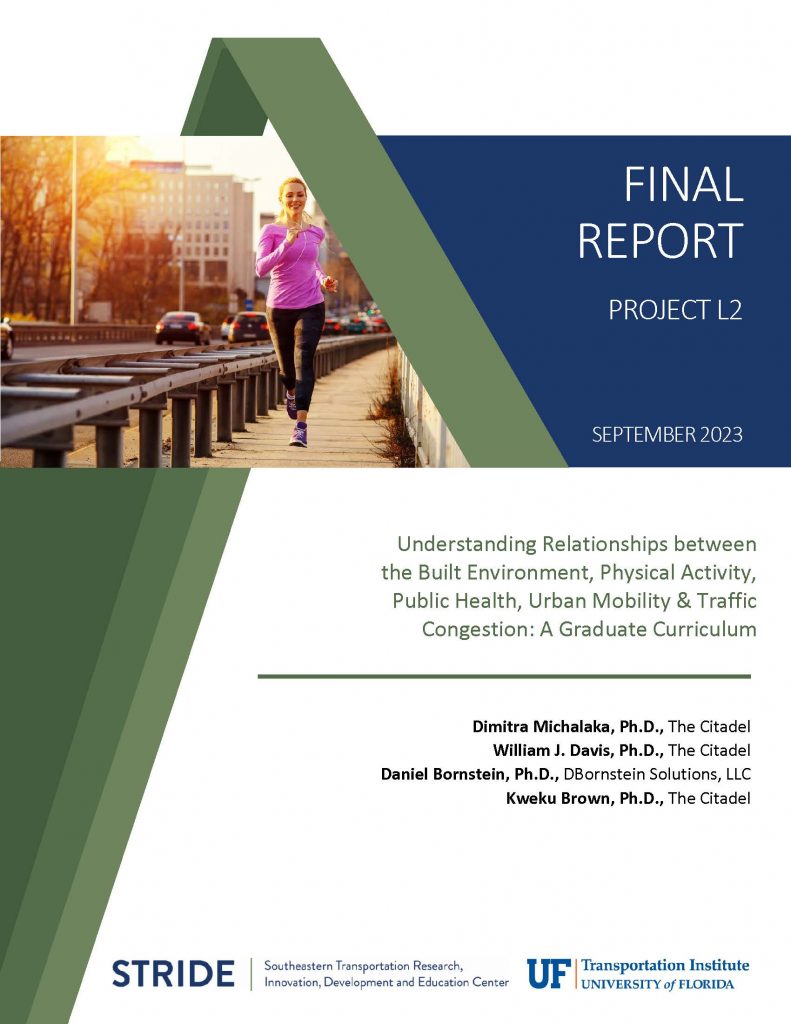Understanding Relationships Between the Built Environment, Physical Activity, Public Health, Urban Mobility, and Traffic Congestion: Graduate Curriculum Development
Research Team
Dimitra Michalaka, Ph.D., The Citadel
William J. Davis, Ph.D., The Citadel
Kweku Brown, Ph.D., The Citadel
Daniel B. Bornstein, Ph.D., The Citadel
John Vena, Ph.D., Medical University of South Carolina
Project Description
Evidence-based research from the public health profession has determined adverse factors associated with the built environment, transportation network, urban land use patterns, and travel mode choices are contributing to declining public health and rising healthcare costs in U.S. metropolitan areas. The objective of this project is to develop a multidisciplinary graduate-level course addressing the intersection between public health, transportation and the built environment. The methodology of this course will focus on establishing basis of need for and potential benefits from implementation of optimal solutions to the challenging dilemma of how the built environment impacts urban mobility, transportation infrastructure, network connectivity, sustainability, livability, and public health. Interconnections between the fields of physical activity, public health, public policy and engineering planning and design will be identified. The goal is for students with diverse backgrounds, in a variety of academic fields, to be able to evaluate urban, suburban communities, and neighborhoods to identify positive and adverse effects of the built environment on levels of physical activity and measures of public health, with an emphasis on adoption of polices and approaches for improving desirable outcomes supporting healthier communities. Currently, there is recognition of the need for physical activity, public health, and transportation professionals to work collaboratively. However, these three disparate fields have distinct methods and languages that often inhibit meaningful collaboration. To the best of our knowledge, this course will is the first of its kind. As such, it will bring together content from physical activity, public health, civil engineering, and transportation planning and community design. Anticipated result of this course will be education of professionals who will have requisite skills, knowledge, and abilities to facilitate collaborative efforts across multiple disciplines to improve physical activity, public health, built environment, and traffic congestion outcomes.
What did this course develop?
This course created a Graduate Course – “Understanding Relationships Between the Built Environment, Physical Activity, Public Health, Urban Mobility, and Traffic Congestion” graduate course including 20 lectures.
